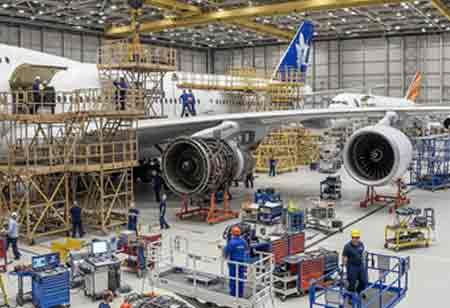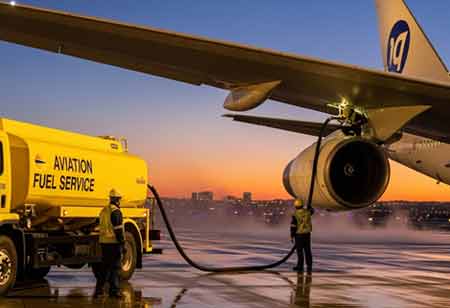The aviation industry in Asia is witnessing a remarkable shift as airlines increasingly focus on transforming the in-flight experience through next-generation inflight entertainment (IFE) systems. Driven by passenger expectations, digital transformation, and rising competition among low-cost and full-service carriers, IFE has become a strategic differentiator rather than just an amenity.
In Asia, home to some of the fastest-growing aviation markets, passenger demographics are undergoing rapid changes. A new generation of tech-savvy travelers is demanding personalized, connected, and high-quality digital experiences even at 35,000 feet.
Airlines in Asia are investing in innovative IFE platforms that go beyond traditional movies and music to include immersive content, e-commerce, real-time connectivity, and personalized engagement. While the market offers immense potential, it also faces several technical, logistical, and economic challenges that require innovative solutions.
High-bandwidth connectivity not only enhances content streaming but also enables live sports, news, messaging apps, and video conferencing, even in mid-flight. The evolution of in-flight retail and advertising is underway. Passengers can now browse catalogs, place orders, and pay digitally through the IFE interface, turning screens into revenue-generating platforms.
Passenger-Centric Drivers and Technological Advancements
Several factors are pushing the demand for advanced IFE solutions in Asia. Rising middle-class affluence, increasing long-haul travel within and from Asia, and growing competition among regional carriers have made the in-flight experience a key differentiator. Airlines have realized that in-flight entertainment is no longer just about keeping passengers occupied, but is an essential touchpoint for enhancing customer satisfaction, loyalty, and even generating ancillary revenue. Asian carriers are especially aggressive in catering to millennial and Gen Z travelers who expect the same digital convenience in the air as they do on the ground.
Modern IFE systems now incorporate touch-screen seatbacks, Bluetooth audio pairing, USB-C fast charging, and 4K HDR video displays. Wireless IFE (wIFE) is gaining popularity, allowing passengers to access content on their devices via onboard Wi-Fi. The model reduces hardware costs and simplifies maintenance while catering to passengers who prefer their screens.
AI and data analytics are being integrated into IFE platforms, enabling airlines to offer personalized content recommendations, language preferences, and real-time feedback options. AI helps optimize content curation by analyzing route-specific passenger profiles and viewing patterns. Integration with satellite-based high-speed internet, especially with Low Earth Orbit (LEO) satellite constellations, is another game-changer.
Applications Across Airline Models and Market Segments
Next-generation IFE platforms are being implemented across both full-service and low-cost carriers in Asia. Full-service airlines are equipping their wide-body fleets with state-of-the-art seatback systems that offer entertainment, flight tracking, destination guides, and wellness programs. Low-cost carriers (LCCs), traditionally resistant to costly IFE systems, are now embracing wireless solutions that deliver content via passengers’ smartphones and tablets.
These lightweight platforms are more cost-effective, reduce aircraft weight, and lower fuel consumption. Some LCCs are also monetizing content access by offering tiered packages—free basic content with paid upgrades for premium movies, live sports, or high-speed connectivity.
The ability to integrate branded content, short-form digital media, and regional entertainment gives LCCs a competitive edge without significant infrastructure costs. Beyond traditional entertainment, IFE is now used for passenger education and engagement. Safety briefings, destination tips, and onboard service menus are being integrated into the digital platform.
As environmental sustainability becomes a priority, digital IFE reduces the need for printed material, aligning with airline sustainability goals. Airlines in Japan, Singapore, South Korea, India, and the Middle East are leading adoption, while emerging players in Southeast Asia and Central Asia are exploring partnerships with global IFE providers to leapfrog older technologies.
Challenges and Market Outlook
Retrofitting older aircraft with new IFE infrastructure requires downtime and capital expenditure that not all carriers can afford. Wireless solutions reduce these barriers but still require investment in onboard servers, software integration, and connectivity infrastructure. Asia’s cultural and linguistic diversity necessitates a diverse range of content offerings to cater to various markets. It increases licensing complexity, content storage requirements, and curation efforts. The need to update content frequently and manage digital rights across multiple countries requires coordinated backend systems and skilled personnel.
Technical reliability and cybersecurity are also concerns. In-flight systems must be robust enough to function without interruption under varying atmospheric conditions and must comply with aviation safety regulations. As more systems become connected, airlines must safeguard sensitive passenger data and protect against cyber threats. Continuous security monitoring and compliance with data protection laws, such as the GDPR and regional equivalents, are essential. Passenger adoption presents a softer challenge. Designing intuitive user interfaces, offering multilingual support, and integrating offline entertainment options remain crucial for broader engagement.
Carriers that prioritize technology, customer insight, and operational flexibility will be best positioned to lead the next wave of aviation innovation. Next-generation in-flight entertainment in Asia is not just about entertainment; it is a convergence of passenger engagement, technology, and business strategy. As airlines compete to deliver differentiated, seamless, and innovative onboard experiences, the future of flying in Asia promises to be more connected, more enjoyable, and more immersive than ever before.









